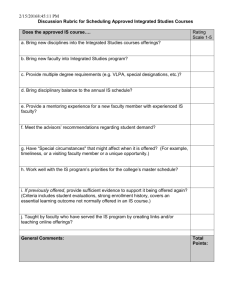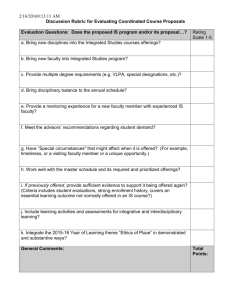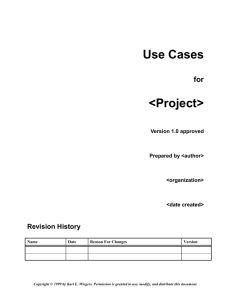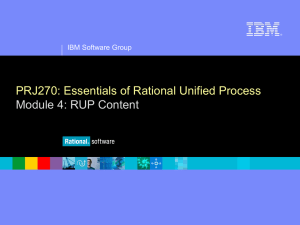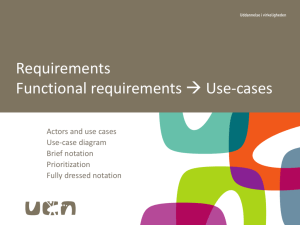Detailing a Use Case
advertisement
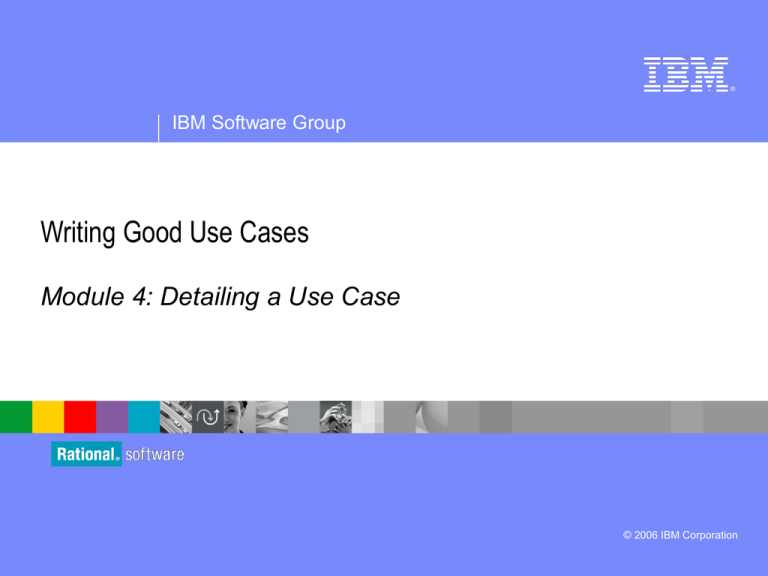
® IBM Software Group Writing Good Use Cases Module 4: Detailing a Use Case © 2006 IBM Corporation Objectives When you complete this module, you should be able to: Detail a use case using the IBM® Rational Unified Process® ( RUP®) style Manage the level of detail in writing use cases 2 Topics Detail a use case Manage the level of detail 3 Process of writing use cases Find actors Detail the flow of events Find use cases Outline a use case Structure the flow of events Specify additional use case properties Detail a use case 4 Detail a use case You found actors and use cases, then outlined the use cases. Next, you add detail. <Use-Case Name> 1. Brief Description 2. Basic Flow of Events 3. Alternative Flows 4. Subflows 5. Key Scenario 6. Preconditions 7. Postconditions 8. Extension Points 9. Special Requirements 10. Additional Information 5 Add Detail Use case style Use cases are structured text How you structure the text is the use case style There are a number of acceptable styles Choose and use only one style For consistency For readability For usability by the development team This course uses the RUP style 6 Detail the basic flow of events Register for Courses Structure the flow into steps Number and title each step Describe the steps 1.1 Basic Flow 1. Log On. This use case starts when someone accesses the Course Registration System and chooses to register for courses. The system validates that the person accessing the system is an authorized student. 2. Select “Create a Schedule ”. The system displays the functions available to the student. The student selects “Create a Schedule ”. 3. Obtain Course Information. The system retrieves a list of available course offerings from the Course Catalog System and displays the list to the student .The student can search the list by department, professor, or topic to obtain the desired course information . 4. Select Courses. The student selects four primary course offerings and two alternate course offerings from the list of available offerings course offerings. … 7 Phrasing of steps Use the active voice Say: “The Professor provides the grades for each student” Instead of: “When the Professor has provided the grades” Say what triggers the step Say: “The use case starts when the Professor chooses to submit grades” Instead of: “The use case starts when the Professor decides to submit grades ”. Say who is doing what (use the Actor name) Say: “The Student chooses …” Instead of: "The user chooses …" Say: “The System validates …” Instead of: "The choice is validated …" 8 Structure the use-case flows Internal organization of the use case Increases readability Makes the requirements easier to understand Document acceptable styles in the Use-Case Modeling Guidelines 9 Cross-referencing using a label Register for Course RUP Style 1. Student Logs On In the Student Logs On step of the Basic Flow, 10 Review: Flows of events (basic and alternative) One basic flow Happy day scenario Successful scenario from start to finish Many alternative flows Regular variants Odd cases Exceptional (error) flows 11 Detail of Alternative Flows Alternative Flows 2.8 Unidentified Student. In the Log On step of the Basic Flow, if the system determines that the student identification information is not valid, an error message is displayed, and the use case ends. 2.9 Quit and Save. At any time, the system will allow the Student to quit. The student chooses to quit and save a partial schedule before quitting. The system saves the schedule, and the use case ends. 2.10 Waiting List In the Select Courses step of the Basic Flow, if a course the Student wants to take is full, the systems allows the student to be added to a waiting list for the course. The use case resumes at the Select Courses step in the Basic Flow. 12 Describe what happens Location Condition Actions Resume location Visualize behavior Visual modeling tools Activity diagrams or flow charts Business process models Should you illustrate behavior? Pro Great tool to identify alternative flows, especially for visually oriented people Succinctly conveys information about use case flows Con Costly to keep diagrams and use-case specifications synchronized 13 Subflows If flows become unwieldy, break individual sections into self-contained subflows Subflows Increase clarity Allow internal reuse of requirements Always return to the line after they were called Are called explicitly, unlike alternative flows Alternative Flows Subflow 14 Example subflow 15 Preconditions Describe the state that the system must be in before the use case can start Simple statements that define the state of the system, expressed as conditions that must be true Should never refer to other use cases that need to be performed prior to this use case Should be stated clearly and should be easily verifiable Optional: Use only if needed for clarification Example Register for Courses use case Precondition: The list of course offerings for the semester has been created and is available to the Course Registration System Student has logged into the Course Registration System 16 Postconditions Describe the state of the system at the end of the use case Use when the system state is a precondition to another use case, or when the possible use case outcomes are not obvious to use case readers Should never refer to other, subsequent use cases Should be stated clearly and should be easily verifiable Optional: Use only if needed for clarification Example: Register for Courses use case Postcondition: At the end of this use case either the student has been enrolled in courses, or registering was unsuccessful and no changes have been made to the student schedules or course enrollments 17 Sequence use cases with pre- and postconditions Use case 1 Use case 2 Use cases do not interact with each other. However, a postcondition for one use case can be the same as the precondition for another. 18 Other use case properties Special requirements Related to this use case, not covered in flow of events Usually nonfunctional requirements, data, and business rules Extension points Name a set of places in the flow of events where extending behavior can be inserted Additional information Any additional information required to clarify the use case 19 Business rules and other special requirements Guideline: If the business rule is specific to the use case, put it in the use case. If it is general to the application, put it in a business rules document, Supplementary Specification, or domain model. 20 RUP style summary Basic flow RUP Use-Case Specification Template Steps are numbered and named Steps do not reference alternative flows Shows the main actor succeeding in that actor’s main goal Alternative flows Have names May have steps 21 Use case checkpoints The actor interactions and exchanged information is clear The communication sequence between actor and use case conforms to the user's expectations How and when the use case's flow of events starts and ends is clear The subflow in a use case is modeled accurately The basic flow achieves an observable result for one or more actors 22 Review What are the steps to detailing a use case? Give a few examples of best practices in phrasing use case steps? What is a subflow, and when should you use one? What are pre- and postconditions, and when should you use them? 23 Topics Detail a use case Manage the level of detail 24 Manage the detail Black Box White Box Know your audience Strive for black box Some white box text may make it easier to understand because it makes the use case more concrete 25 What guides the level of use case detail on a project? Fewer, better use cases Functional decomposition What What and how Experienced analysts Experienced architects Better techniques and methods Training, mentoring, guidance Developers’ demands Transition from old requirements approach Waterfall approaches Low team sophistication about modeling 26 Correct level of detail No user interface design details – focus on information and events not formats and controls No architectural assumptions (requirements not design) But use case steps may affect the architecture No internal processing unrelated to a stakeholder requirement –focus on what behavior to capture, not how to implement the behavior How much detail in a use case? Enough to satisfy all stakeholders that their interests (requirements) will be satisfied in the delivered system. 27 Discussion: Use case example 1 28 Discussion: Use case example 2 29 Discussion: Use case example 3 30 More use case checkpoints The use case contains no embedded architectural assumptions The use case contains no embedded userinterface assumptions 31 Review What kinds of information should not be included in your detailed use case? How do you determine the correct level of detail for a use case? 32 Exercise 4: Detail a use case In this exercise, you detail a use case 33 34

